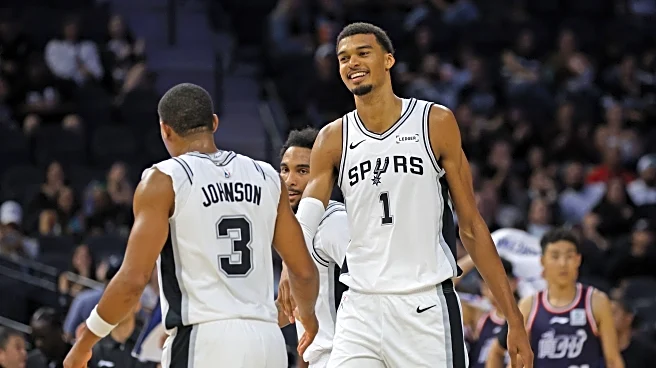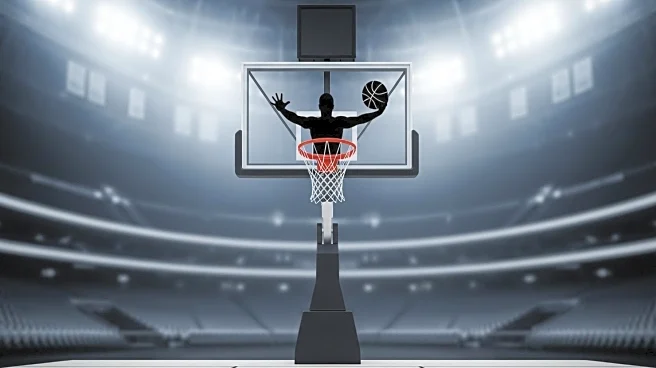What's Happening?
Dylan Harper, the No. 2 pick in the NBA draft, made a notable preseason debut for the San Antonio Spurs against the Utah Jazz. Harper showcased his skills by executing an alley-oop to Victor Wembanyama, contributing to the Spurs' 134-130 victory. Despite a minor flaw in the alley-oop pass, Harper's performance was nearly flawless, achieving a game-best plus-minus of 22 in the first half. He scored nine points, made two assists, and demonstrated strong defensive capabilities. Harper's debut was particularly significant as he returned from surgery for a partially torn collateral ligament in his left thumb, wearing a splint during the game.
Why It's Important?
Harper's successful debut is crucial for the Spurs as they integrate new talent into their roster. His ability to perform well despite recent surgery indicates his potential to contribute significantly to the team's success. Harper's chemistry with Wembanyama, a key player, suggests promising teamwork that could enhance the Spurs' performance in the upcoming season. The rookie's defensive skills and scoring ability are assets that could help the Spurs in their quest for a competitive edge in the league.
What's Next?
As Harper continues to recover from his thumb injury, the Spurs will likely monitor his minutes to ensure his health and readiness for the regular season. The team will focus on building chemistry between Harper and Wembanyama, optimizing their on-court synergy. Harper's development will be crucial as the Spurs aim to leverage his skills for a successful season. Fans and analysts will watch closely to see how Harper adapts to the demands of the NBA and contributes to the team's dynamics.
Beyond the Headlines
Harper's debut highlights the challenges and adjustments rookies face when transitioning to professional basketball, especially when recovering from injuries. His experience underscores the importance of strategic player management and the role of teamwork in achieving success. The Spurs' approach to nurturing Harper's talent reflects broader trends in sports management, emphasizing player health and development.











